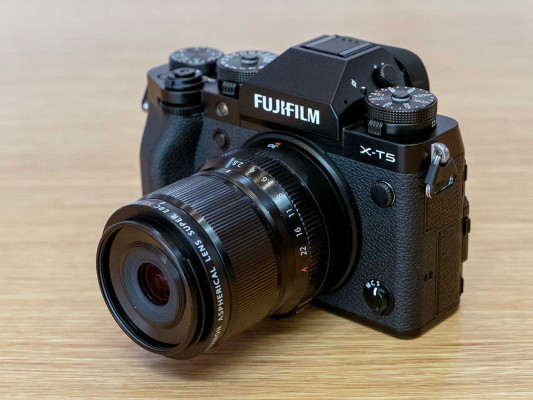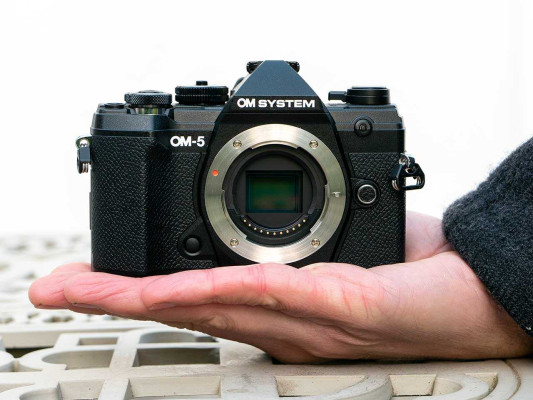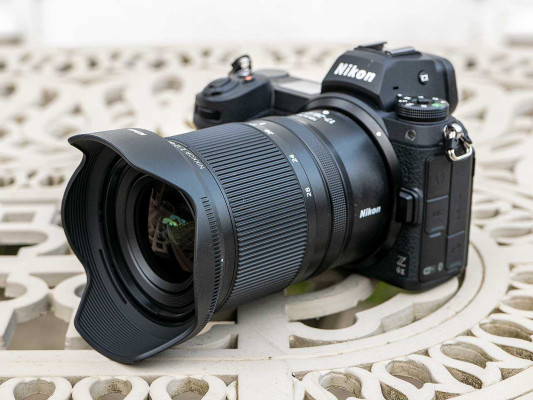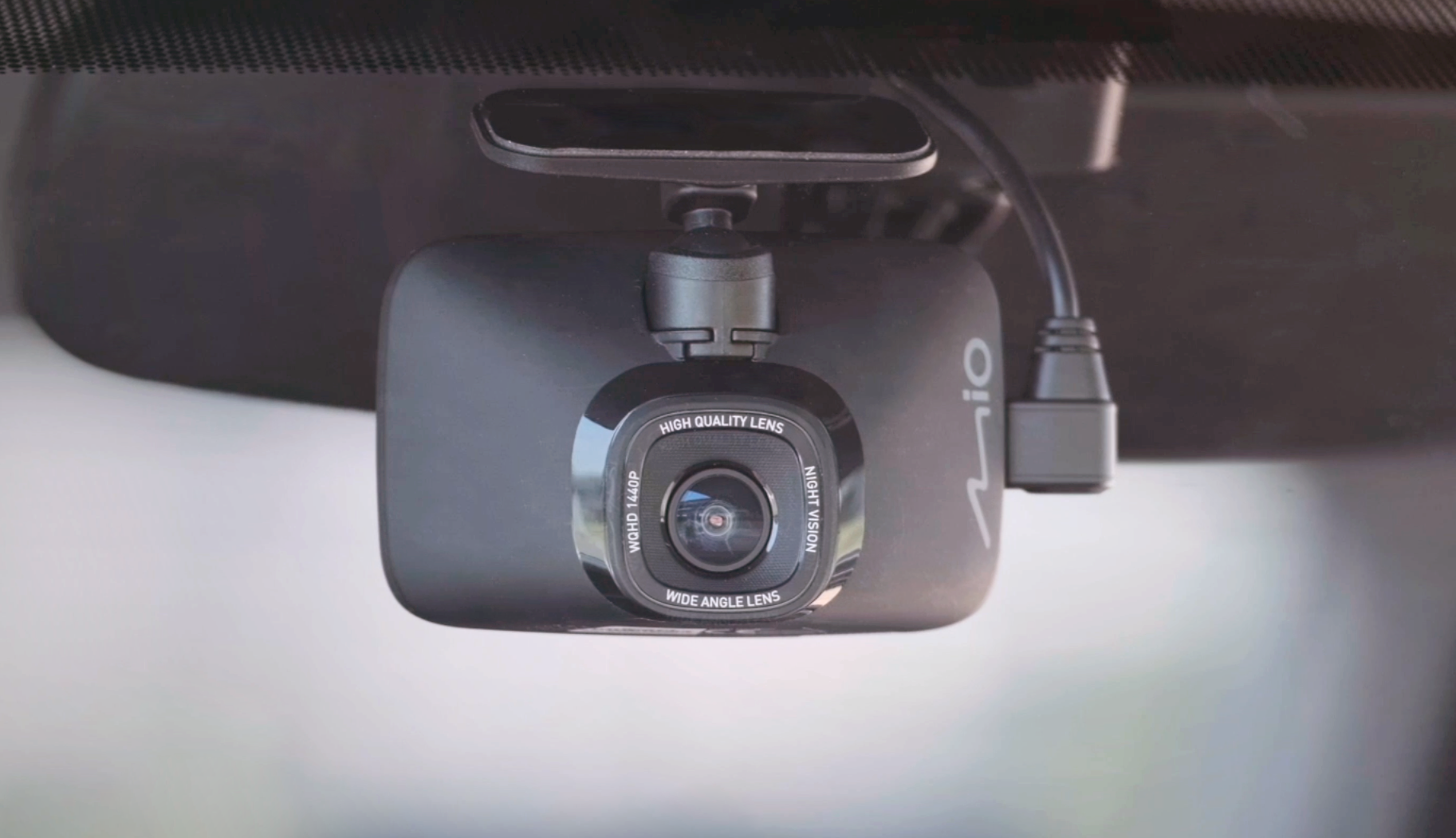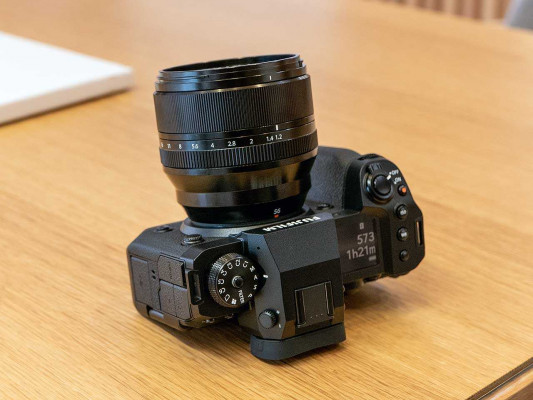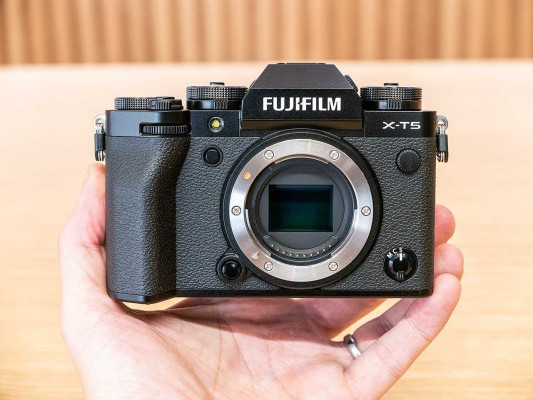Reviews

ON1 Photo Raw 2023 review: AI smarts speed up your photo edits
DPReview Latest |
| ON1 Photo Raw 2023 shown in its Browse mode for organizing and managing images. |
Since 2017, Portland-based ON1 Software's flagship product has been ON1 Photo Raw, an all-in-one photographic toolbox. This suite gives you pretty much everything you'll need to import, organize, edit and print your photos. With year's end fast approaching, another major release of the app has just landed and it's jam-packed with new features.
As well as support for the latest camera gear and file formats, ON1 Photo Raw 2023 also brings a raft of AI-based tools that make it easier than ever to shepherd your creations from Raw file to final form. This latest version, which is available for both macOS and Windows machines, can now take subjects into account when keywording, masking, cropping and applying presets. It also corrects for subtle blurring and color fringing, lets you preview the effect of presets full-screen, and makes it easier than ever to swap out dull skies for more visually interesting ones.
Key Features
- Comprehensive image management and editing features
- Accepts Raw files from around 930 cameras, phones, drones and other sources
- Automatically corrects lens defects for almost 1,200 different lenses
- Allows both global and local editing including layers
- Supports multi-shot techniques like HDR, focus stacking and panoramas
- Includes new AI tools for cropping, masking, deblurring, keywording and more
- Pay once or with an ongoing subscription
ON1 Photo Raw 2023 is available via a one-time payment for a perpetual license or with an ongoing subscription charged monthly or yearly. Subscription customers get a choice of either the ON1 Everything or Everything Plus subscription levels.
The ON1 Everything subscription includes Photo Raw 2023 itself plus 200GB of cloud storage and ON1's Resize AI, Effects, NoNoise AI, Portrait AI and HDR plugins, all of which can also work with third-party applications like Lightroom or Photoshop. (These plugins can be purchased perpetually too, but at double the cost of the base ON1 Photo Raw 2023 license.) ON1 Everything costs $7.99 monthly or $89.99 if paid annually.
The Everything Plus subscription gives you all of that and adds access to the ON1 Plus community for tips, tutorials, ebooks, presets and more, an expanded one terabyte of cloud storage and an increase in the number of allowed activations for each product from two to five machines. Everything Plus costs $179.99 annually with the first year discounted to $149.99.
Perpetually-licensed customers will receive the app itself plus one year of updates for $99.99. Customers who own any previous ON1 product can upgrade to ON1 Photo Raw 2023 for $79.99.
 |
| Photo Raw 2023 in Edit mode. The image shown has been cropped to 1:1 and a Grunge filter applied intelligently to only the architectural elements in the scene. |
ON1 Photo Raw 2023: The 10,000-foot overview
Given such a comprehensive product, we're not going to test every feature of ON1 Photo Raw 2023 for this review. Instead, we'll first give you a rundown of the basics, then follow up with a tour of the newly-added features to see how each performs in real-world use.
So what can you expect from ON1 Photo Raw 2023? It's a pretty comprehensive package that gives you most of what you'd get from, say, Adobe Lightroom Classic or Capture One. That's not to say that every feature is here – for example, there's no map view for geolocated images, nor can you export slideshows for viewing on another computer. But all of the basics are present and accounted for.


ON1 Photo Raw 2023 begins with a pretty robust selection of image management tools. You can either import images as albums, or browse folders either on your local drives or via Dropbox, Google Drive or OneDrive. Images can be rated, tagged and keyworded, and keywording can now be done automatically. Tethering support is available too, although this is limited solely to supported cameras from Canon and Nikon.
Moving into editing, ON1 Photo Raw 2023 provides a healthy selection of manual controls, as well as automatic tools to correct for common lens defects or to fix color and exposure issues, optionally aiming to mirror the look of images straight from the camera. It also has automatic tools that aim to tame noise and correct for subtle blurring. Both global and local adjustments are available, so you can also easily fix small dust spots or skin blemishes, or have the software automatically clone out larger objects that distract from your subjects.
There are also dedicated tools to improve portraits (based on face detection) and skies (again detected automatically). For more complex tasks you can not only work with layers, but also use multi-shot techniques like panoramic stitching, HDR, focus-stacking and encoding of time-lapse movie clips. And if you just want quick results, there's a generous selection of preset looks, some of which can also use AI algorithms that take your subjects into account.
Finally, you can also print your images directly from Photo Raw, and if desired the app can work in parallel with other applications like Lightroom or Photoshop.
Super Select AI makes subject selection much quicker, but still needs refining
Among the newly-added features in ON1 Photo Raw 2023, the attention-grabber has to be its new Super Select AI tool, which makes very light work indeed of subject selection. When you first open the tool, it very quickly analyzes yourimage and divides it into regions based on the subject matter, aiming to group like things together.
For example, in my shot of the Tian Tan Buddha at Hong Kong's Po Lin Monastery, the feature automatically discerned a total of 18 separately-masked regions. Each region is highlighted in red when you hover over it, and multiple regions can be selected at once with the highlight color changing to blue when selected.
In the shot above, as well as the obvious regions for the sky and foliage, I also got separate regions for each person in the foreground. Impressively, baby and mother at frame right are each individually masked. There are also individual regions for seven of the people climbing the stairs in the distance. Roughly a dozen of the remaining people in the distance are grouped as a single region.
Unfortunately, while the upper half of the Buddha is its own region, the lower half is misdetected as part of the stairs, along with the walls in the foreground podium. The floor of the podium is the final region, and it too mistakenly includes a couple of patches of the stairs above.


Overall, the algorithm did a very impressive job of separating the scene into logical regions, and it was achieved without any effort at all on my part despite the fairly tricky subject. With that said, I did still have a few issues that suggest this feature still needs some work.
Firstly, with some shots I had issues with incorrectly-represented masks. For example, in the above photo I multi-selected all of the separate regions comprising the stairs, only to find that my adjustments didn't affect the whole space covered by the blue-tinted mask. Meanwhile the adjustments did affect distant people who weren't covered by the mask.


Secondly, region detection can be sloppy. On my shot of the Aqua Luna tourist junk in Hong Kong's harbor, the bright yellow pennant atop the mask mysteriously shares its region with a couple of random chunks from the rightmost skyscraper in the distance.
Finally, Super Select AI isn't so great at identifying regions when the background is seen bleeding through subject gaps, even when that background has quite clear visual separation. For example, in the Aqua Luna image, the mask for the junk includes not only the boat itself but all of the background areas between the many stays supporting its masts and sails. This issue also frequently crops up for foliage in winter, when complex bare branches are seen against sky.
Still, for many shots there are no such issues, and Super Select AI can be a huge time-saver much of the time, even if you'll still need to roll your sleeves up and do the masking yourself for trickier scenes.
Mask AI is similar, but applies only for filters
ON1's Mask AI is also new to Photo Raw 2023. It functions very similarly to Super Select AI, but it doesn't have its own distinct tool and applies only when filtering images. Before applying your filter, you can now choose whether it should be applied to one or more different categories of detected subjects.
The precise list of categories changes depending on your source image. Some images might have only four categories, while more complex ones give you many more.
Content-aware crop isn't necessarily what its name might suggest
Another addition to Photo Raw 2023 is what ON1 calls Content-Aware Crop. This isn't what you might initially guess. Rather than cleverly figuring out how to crop your image for the best composition, it actually helps out when you need to expand the canvas in some directions by cropping outward.


It's thus analogous to Adobe's Content-Aware fill tool in Photoshop, and it shares the same newly-updated algorithms that underlie ON1's Perfect Eraser tool.
I found the Content-Aware Crop to be fairly useful so long as my source image had a relatively simple, indistinct background to extend, as in the example above. Sadly, I found that it couldn't quite handle detail-rich backgrounds as well as Photoshop.
In the comparison below, I've extended a detail-rich background in all four directions, and while Adobe's treatment still has signs of cloning if you look closely, they're much more noticeable in the ON1 version.


AI adaptive presets are smart enough to take your subjects into account
Past versions of ON1 Photo Raw already shipped with a generous bounty of user-friendly presets to help get the look you're after with a minimum of fuss, but in Photo Raw 2023 they're joined by another 60+ options under the new AI Adaptive Presets header. There are eight main groups of AI presets on offer: Architecture, Bird & Wildlife, Food, Landscape, Outdoor Portraits, Planes & Cars, Sky and Studio Portraits.
These differ from the other presets in Photo Raw in that they're not applied globally, but rather can take the image's subjects into account using face and object detection. Although they're not as much of a headline-grabber as Super Select AI, I found them to be my favorite new feature in ON1 Photo Raw 2023.
Each choice can be previewed at a decent resolution before application simply by hovering your mouse over the icon for the preset you want to try. It takes a few seconds for the preview to appear, although obviously your mileage will vary depending upon image resolution and the performance of your computer. It's still a good bit quicker than applying and undoing each preset to get a feel for them.
These new intelligent presets can deliver great results with very little fuss, making it much easier for less-experienced photographers to get the look they're after without a steep learning curve.
A few pictures can speak better than a thousand words here, so let's take a look at a few before-and-after comparisons:










Tack Sharp AI deblurring can help bring the crispness back to soft shots
ON1 Photo Raw 2023 also introduces a new AI deblurring function which aims to bring some crispness and detail back to shots which are blurred, either due to missed focus or motion blurring. You'll need to temper your expectations a little, as the function isn't going to turn a significantly blurred shot into a usable one. But if your shot is only subtly blurred, AI deblurring can perhaps rescue it to usability, if not perfection.
The new Tack Sharp AI tool can be found in the Noise and Sharpening panel, and it can either be applied to your image alone or in concert with Photo Raw's NoNoise AI noise reduction filter. So how does it perform? Let's take a look!


For my first comparison, we're looking at a 100% crop from an ISO 100 image which was shot from a moving helicopter at just slightly too slow a shutter speed. Even at its default settings, Tack Sharp AI improves sharpness significantly.
It also introduces some stair-stepping and other unsightly artifacts, but if you're not planning on pixel-peeping it that closely, it makes the image acceptably crisper.


Cleaner micro-results are possible if you dial the strength sliders back from their defaults. Here, we're comparing a shot with very narrow depth of field at both Tack Sharp AI's default settings, and with a 50% reduction on both the deblur and micro sharpening sliders. There's still a noticeable improvement in sharpness with the sliders dialed back, but with fewer artifacts. The result feels more realistic and less oversharpened when viewed 1:1, and also looks less noisy to boot.
For bonus points, dialing the deblurring strength back also fixed some unsightly banding that was introduced in both the top left and top right corners of the image at the default deblurring strength. (It's too subtle to show off in these crops, but when comparing to the full-sized shot rendered at a lower deblur level, you can see that the default settings cause what looks a little like a faint fingerprint or moire pattern in the out-of-focus areas.)


Perhaps the hardest test for AI algorithms like these is fine text. For my last comparison, I chose a very high-sensitivity image shot in a bar at ISO 40,000 and combined the AI deblurring and denoising algorithms. As you can see, the denoising algorithms can completely tame the noise even at this high sensitivity – in fact arguably they could use dialing back a little for a more natural look.
As for the text sharpness, I can definitely read a little more than I could in the before shot, though other areas have been rendered illegible.
AI keywording is a big time-saver, but can't identify individuals
One last big feature added to ON1 Photo Raw 2023 is its ability to scan your images and automatically suggest keywords based on their content and metadata. The Keyword AI tool can automatically scan your catalogued photos for you in the background, or you can select specific images you'd like scanned and trigger it manually. The scanning process happens entirely on your own machine and can be disabled altogether if you prefer.
Auto-suggested keywords won't populate the keyword field automatically, but rather will be added to the AI Keywords field. From there you can easily move any tags you agree with to the IPTC Keyword field with a single click. You can also choose to enable or disable whole categories of keywords from the preferences dialog; for example if you're not interested in having your photos tagged as being high or low key, you can disable that category.
 |
| The Keyword AI tool can be switched off altogether, or entire categories of suggestions disabled at a single click unless you need them. |
I found the quality of the keywords suggested to be a bit hit or miss. Some suggestions like locale names (calculated from geotags) or a count of the number of primary subjects in the scene can prove very helpful in locating your images later. So too can recognized subjects like 'race car,' 'amusement park,' 'sailboat' or 'flower.' A lot of the suggestions seem spurious, though. I can't imagine anyone wanting to tag all of their portraits with 'human nose' or 'temple (body part),' nor wanting every photo with a car tire to be tagged 'synthetic rubber.' I'd really like to see ON1 tidy up its suggestions to remove many of these.
What's really missing, though, is a way to group-tag your photos with the names of specific individuals – friends, family members, colleagues, etc. – based on face recognition. That's probably the biggest shortcoming of the Keyword AI tool as it stands, but it's still a very worthwhile addition even in its current form.
New camera support and other tweaks
ON1 Photo Raw 2023 recognizes an impressive 900+ cameras, phones, drones and more, as well as around 1200 lens models whose defects can be automatically corrected. New for this release are support for the Fujifilm X-H2 and X-H2S (including losslessly-compressed raw), Nikon Z30 (including high-efficiency NEF files), plus .GPR Raws from the GoPro Hero 7 thru 11 and GoPro Fusion. (Panasonic GH6 support was also planned, but didn't quite make it in time for initial release.) The latest version also supports 18 new lenses from ten different manufacturers.
Other more minor changes include improvements to Sky Swap AI and color fringing reduction. The latter is self-explanatory, while the Sky Swap AI changes include a raft of new replacement sky images courtesy of Ocudrone, plus the ability to adjust the sky angle for a more convincing effect.
Conclusion
There's a lot to like in ON1 Photo Raw 2023. It's an all-in-one digital darkroom that provides not only strong editing tools but also organization and management as your library grows ever larger. While some of the new AI features still have some rough edges, most of them are still quite useful and will frequently save users' time.
Image quality is pretty good overall, and I found myself quite impressed by ON1's noise reduction in particular. I was also pleased to see that lens corrections are performed automatically, something Adobe Lightroom still fails to manage for me with some regularity.
While its new AI features are still a little rough around the edges, I found ON1 Photo Raw 2023 to be quite a solid offering overall
If there's a weak spot for me, it would have to be Photo Raw 2023's user interface performance. While I quite liked the UI overall, I found it locked up quite often for multiple seconds at a time even when working solely with files on my local machine. It could also use some indication that work is progressing while generating its handy, much larger previews for filters and effects. Overall, though, I found enough I liked here that I could live with the occasional freezes.
That's doubly true when one considers that – unlike Adobe – ON1 Photo Raw 2023 gives users a choice of a perpetual license or ongoing subscription. If you don't plan to upgrade more than once every few years and don't need cloud storage, that alone has the potential to save you hundreds of dollars over the cost of an ongoing subscription.
While there's definitely room for more refinement of the new AI tools, I found ON1 Photo Raw 2023 to be a pretty solid offering even in its current state. With a 14-day trial readily available from the ON1 website, I highly recommend giving Photo Raw 2023 a go for yourself!
| What We Like | What We Don't |
|---|---|
|
|





